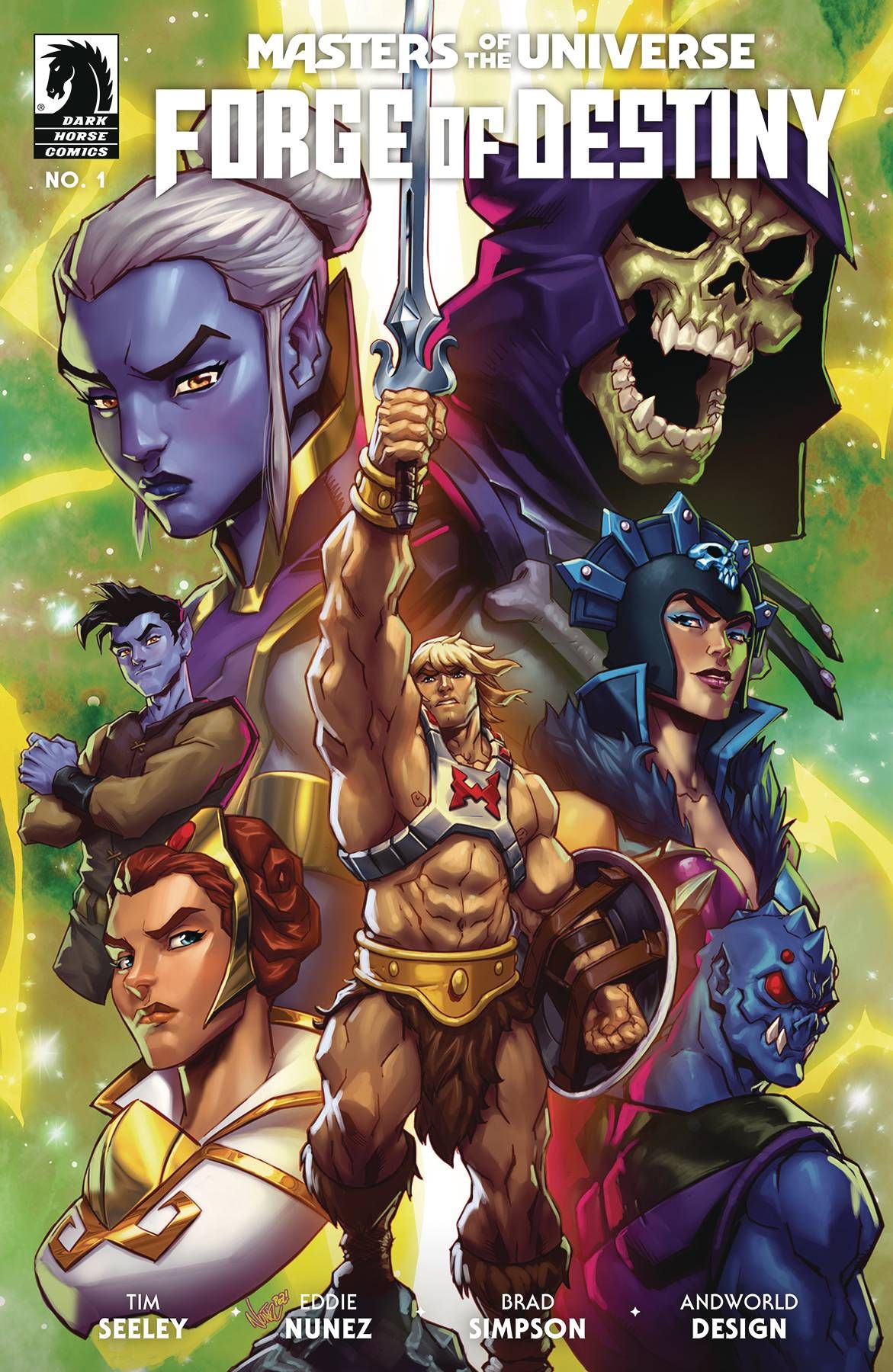A prequel to Kevin Smith's 2021 Netflix animated series Masters of the Universe: Revelations, the Dark Horse comic Masters of the Universe: Forge of Destiny explores one of He-Man's early adventures as the defender of Eternia. The first issue for the new series -- written by Tim Seeley, with art by Eddie Nunez, colors by Brad Simpson, and letters by AndWorld Design -- is heavy on exposition and setup. Despite strong art from Nunez and Simpson, the issue offers little to get excited about. Hardcore fans may appreciate the world-building, but Seeley's dense script leaves little for the visuals to work with.
Set in Prince Adam's first year as He-Man, Forge of Destiny #1 sees the young prince forced on a diplomatic adventure to the mysterious nation of Anwat Gar, home of Eternia's most advanced science and technology. On the journey, Adam will be forced to reckon with his own irresponsible past and the impact it has on his loved ones as He-Man's enemies set their evil plans into motion.
Solicited as something of a "Year One"-style adventure for the character, Forge of Destiny does not provide readers with a He-Man origin story. Instead, it picks up sometime after Prince Adam has been granted his powers and has already begun his battles with Skeletor and his minions. As a result, Seeley's script spends a great deal of time explaining the relationships between characters as well as Prince Adam's irresponsible and capricious history. The characters repeatedly note how unreliable the Prince is. But readers are never actually shown examples of this. The only time that Prince Adam's fickle reputation is leveraged is to cover for his activities as He-Man. A monologue from Adam's bodyguard Teela, where she laments their friendship for all the ways it has cost her, falls flat. Readers have not actually seen the relationship or how it broke, robbing the moment of authenticity.
Most of the issue is devoted to explaining the political landscape of Eternia and Anwat Gar and the rules of how magic and technology intertwine. The issue consists mostly of characters sitting and talking. The king tells his subjects that Anwat Gar is mysterious and their technology is dangerous. But there is no dramatic depiction of historic events, just words on a page. He-Man aficionados might have fun diving into the differences and nuances of this version's history of Eternia. But the plot suffers for not allowing Eddie Nunez's art to do more of the storytelling.
The book is at its most interesting when it puts characters into dramatic conflict. There is a clear attempt to give Prince Adam's heroics as He-Man a personal cost. It adds a compelling and humanizing wrinkle to the pure power fantasy inherent to the He-Man concept. Even then, it is not used to its fullest. The story lacks genuine emotional stakes. A more compelling exploration of He-Man's early days would have given readers time to see who Adam was for themselves.
The reliance on expository dialogue is even more disappointing because Eddie Nunez's art is so dynamic. The abundance of talking head conversations works against his strengths as an illustrator. The few images of movement and action that are featured in this issue look fantastic. Nunez's characters are expressive and flow with clarity across the page. He-Man is imposing, visually dominating the space. Brad Simpson's bright, cel-shaded style gives Eternia the pop art styling that works best for the outlandish world of the Masters of the Universe. It's just a shame they don't get the showcase they deserve in this issue.
Luckily, Forge of Destiny has the excellent AndWorld Design on letters. The word balloons and captions work dynamically with the art to lead the eye through the page. Subtle shifts in the shape of caption boxes and balloons add to the characterization. It helps distinguish multiple speakers and narrators in an issue full of them. With a script this reliant on dialogue, these subtle choices make an enormous impact. With so much lore and table setting out of the way, there is potential for Masters of the Universe: Forge of Destiny to capitalize on its most promising elements -- the emotional cost of being He-Man and Eddie Nunez's art -- in future installments. But there is little within this debut issue to enjoy on its own merits.



